In the world of cable manufacturing, the process of wire drawing stands as a cornerstone. This intricate technique, involving the reduction of wire diameter through a series of dies, is essential for producing the high-quality cables that power our modern world. From telecommunications to power transmission, the applications of wire drawing are vast and vital. This article delves into the specifics of wire drawing, highlighting its importance, techniques, and the latest advancements in the field.
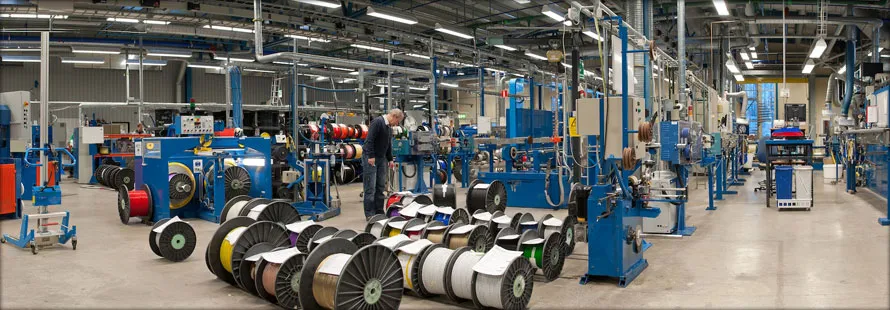
You may be interested in this article. The Future of Cable Manufacturing
Understanding Wire Drawing
Wire drawing is a metalworking process where a wire is passed through one or more drawing dies to reduce its diameter and increase its length. This process enhances the wire’s tensile strength and surface finish, making it suitable for various applications. Typically, materials such as copper, aluminum, and steel are used, each selected for its unique properties and suitability for specific applications.
The Basics of Wire Drawing
At its core, wire drawing involves pulling a wire through a die, a tool with a precisely shaped hole. The die’s hole is slightly smaller than the wire’s diameter, and as the wire is drawn through it, the material is forced to conform to the die’s shape. This process can be repeated multiple times with progressively smaller dies to achieve the desired diameter and mechanical properties.
The primary components of a wire drawing setup include:
- Wire rod: The starting material, often in large coils.
- Drawing dies: Precision tools made from hardened steel, tungsten carbide, or diamond.
- Drawing machines: Equipment that pulls the wire through the dies, typically featuring motors and capstans to control tension and speed.
Types of Wire Drawing
Wire drawing can be classified into several types based on the equipment used and the specific techniques applied:
- Single-wire drawing: The most basic form, where the wire is drawn through a single die in one continuous operation.
- Multi-wire drawing: Multiple wires are drawn simultaneously through a series of dies, increasing efficiency and throughput.
- Wet drawing: Lubricant is used to reduce friction and heat, enhancing die life and wire quality.
- Dry drawing: A dry lubricant is applied, suitable for materials that do not react well with liquid lubricants.
- Cold drawing: The wire is drawn at room temperature, commonly used for metals like steel and copper.
- Hot drawing: The wire is heated before drawing, useful for metals that harden quickly or have high ductility at elevated temperatures.
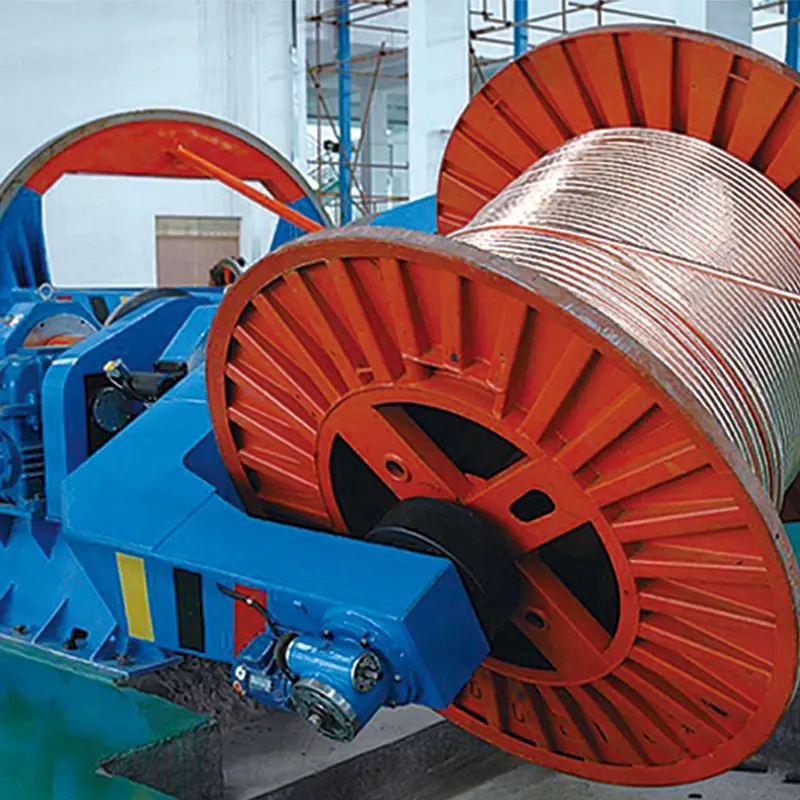
The Importance of Wire Drawing in Cable Production
In cable manufacturing, wire drawing is crucial for several reasons:
Enhanced Mechanical Properties
Wire drawing significantly improves the mechanical properties of the wire. As the wire is drawn, its grain structure is refined, leading to increased tensile strength and hardness. This is particularly important for applications where the wire must withstand high stress and mechanical wear.
Precision and Consistency
The wire drawing process ensures precise control over the wire’s diameter and surface finish. This consistency is essential for producing high-quality cables with uniform electrical and mechanical properties. In applications like telecommunications and power transmission, where performance and reliability are paramount, this precision is non-negotiable.
Material Efficiency
Wire drawing allows manufacturers to produce wires with minimal material wastage. By reducing the diameter in controlled increments, the process maximizes the use of raw materials, leading to cost savings and reduced environmental impact.
Techniques and Innovations in Wire Drawing
The wire drawing industry has seen numerous advancements over the years, driven by the need for higher efficiency, better quality, and enhanced capabilities. Let’s explore some of the cutting-edge techniques and innovations shaping the future of wire drawing.
Advanced Die Materials and Coatings
The development of advanced die materials and coatings has revolutionized wire drawing. Traditional steel dies have largely been replaced by tungsten carbide and diamond dies, which offer superior hardness and wear resistance. Additionally, advanced coatings like titanium nitride (TiN) and diamond-like carbon (DLC) further enhance die life and reduce friction, enabling higher drawing speeds and improved wire quality.
Lubrication Technology
Effective lubrication is critical in wire drawing to reduce friction and heat generation. Modern lubricants are formulated to provide optimal performance under varying conditions. Wet drawing processes benefit from synthetic lubricants that offer superior cooling and lubrication, while dry drawing processes utilize advanced solid lubricants that minimize residue and contamination.
Automation and Digitalization
Automation and digitalization are transforming the wire drawing industry. Advanced drawing machines equipped with sensors and computer control systems can monitor and adjust parameters in real-time, ensuring optimal performance and consistent quality. These systems can detect anomalies, such as die wear or wire defects, and make automatic adjustments to maintain production standards.
High-Speed Drawing
High-speed wire drawing is a significant trend in the industry, driven by the need for increased productivity and reduced production costs. Modern drawing machines are capable of handling higher speeds without compromising quality. This requires precise control of factors such as tension, lubrication, and cooling to prevent defects and maintain wire integrity.
Environmental Considerations
Sustainability is becoming increasingly important in wire drawing. Manufacturers are adopting eco-friendly practices, such as recycling lubricants, reducing energy consumption, and minimizing waste. These efforts not only reduce the environmental impact but also contribute to cost savings and improved operational efficiency.
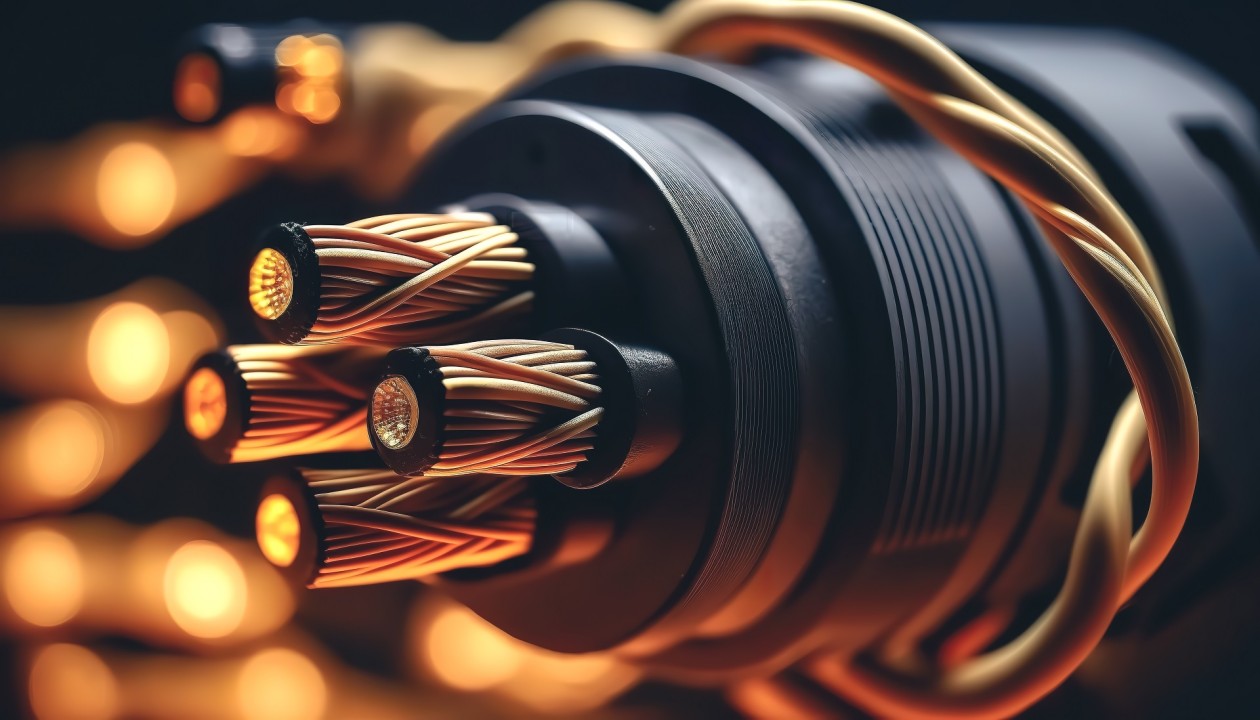
You may be interested in this article. The Latest Tech Trends in Cable Manufacturing Equipment
Challenges in Wire Drawing
Despite its numerous advantages, wire drawing also presents certain challenges. Addressing these challenges is crucial for maintaining high standards of quality and efficiency in cable production.
Die Wear and Maintenance
Die wear is a significant issue in wire drawing. As the wire passes through the die, it gradually wears down, affecting the wire’s diameter and surface finish. Regular maintenance and timely replacement of dies are essential to prevent defects and ensure consistent quality.
Heat Generation
The drawing process generates significant heat due to friction between the wire and the die. Effective cooling systems and lubricants are necessary to manage this heat, preventing thermal damage to the wire and die.
Surface Defects
Surface defects, such as scratches, pits, and inclusions, can occur during wire drawing. These defects can compromise the wire’s mechanical and electrical properties. Implementing stringent quality control measures and using advanced inspection technologies can help detect and eliminate such defects.
Future Trends in Wire Drawing
The wire drawing industry continues to evolve, with ongoing research and development aimed at overcoming existing challenges and unlocking new possibilities. Some of the future trends in wire drawing include:
Nanostructured Materials
The use of nanostructured materials in wire drawing holds great promise. These materials, with their unique properties, can enhance the performance and durability of wires. Research is underway to develop cost-effective methods for producing nanostructured wires on a commercial scale.
Additive Manufacturing Integration
Integrating additive manufacturing (3D printing) with wire drawing could revolutionize the production of complex wire-based components. This hybrid approach can enable the creation of customized wire geometries and structures, opening up new applications in industries such as aerospace and biomedical engineering.
Artificial Intelligence and Machine Learning
Artificial intelligence (AI) and machine learning are poised to play a significant role in wire drawing. AI-powered systems can analyze vast amounts of data from the drawing process, identifying patterns and optimizing parameters for improved performance and quality. Machine learning algorithms can predict maintenance needs, reducing downtime and enhancing productivity.
Conclusion
Wire drawing is a vital process in cable manufacturing, underpinning the production of high-quality wires with precise dimensions and superior mechanical properties. The advancements in die materials, lubrication technology, automation, and sustainability are driving the industry forward, enabling manufacturers to meet the ever-growing demands of modern applications.
As the wire drawing industry continues to innovate, the future holds exciting possibilities. From nanostructured materials to AI-driven optimization, the next generation of wire drawing techniques promises to deliver even greater efficiency, quality, and versatility. By embracing these advancements, manufacturers can stay ahead of the curve, ensuring their cables remain at the forefront of technological progress.
In this dynamic and evolving field, the expertise and commitment of industry professionals are paramount. Through continuous learning, adaptation, and investment in cutting-edge technologies, the wire drawing industry will continue to thrive, powering the world with the high-performance cables that connect and sustain our modern lives.
Spotlight on MSS Machinery: Leading the Way in Cable Manufacturing Technology
As we delve into the intricate world of wire drawing and its critical role in cable production, it is impossible not to acknowledge the groundbreaking contributions of industry leaders who provide the machinery that makes this process possible. Among these pioneers, MSS Machinery stands out as a beacon of innovation, quality, and reliability.
Introducing MSS Machinery
MSS Machinery is renowned for its cutting-edge cable manufacturing machines, tailored to meet the diverse needs of the global cable industry. With a legacy of excellence and a commitment to pushing the boundaries of technology, MSS Machinery has earned a stellar reputation among cable manufacturers worldwide. Their state-of-the-art equipment is designed to optimize efficiency, enhance product quality, and ensure unparalleled precision in every aspect of cable production.
Why MSS Machinery?
Innovative Technology
MSS Machinery leverages the latest advancements in engineering and technology to deliver machines that set new standards in the industry. Their wire drawing machines, for instance, are equipped with advanced automation and digitalization features, allowing for real-time monitoring and adjustment. This ensures optimal performance, minimizes downtime, and enhances overall productivity.
Unmatched Quality and Reliability
At the heart of MSS Machinery’s success is their unwavering commitment to quality. Each machine is meticulously crafted using the finest materials and cutting-edge manufacturing techniques. Rigorous quality control measures are implemented at every stage of production to ensure that every machine meets the highest standards of durability and performance. This reliability translates into significant cost savings and peace of mind for manufacturers, who can trust MSS Machinery to deliver exceptional results consistently.
Comprehensive Product Range
MSS Machinery offers a comprehensive range of products that cater to the varied needs of the cable manufacturing industry. From single-wire and multi-wire drawing machines to advanced extrusion lines and cabling equipment, their portfolio encompasses everything needed for efficient and high-quality cable production. Each machine is designed with user-friendliness and adaptability in mind, making it easy for manufacturers to integrate them into their existing production lines.
Customer-Centric Approach
Understanding that each client has unique requirements, MSS Machinery prides itself on its customer-centric approach. They work closely with their clients to understand their specific needs and provide customized solutions that enhance production capabilities. Their dedicated support team offers unparalleled service, from initial consultation and installation to ongoing maintenance and technical support, ensuring that clients receive the maximum value from their investment.
Discover MSS Machinery’s Products
For those interested in exploring the advanced machinery that MSS Machinery offers, a visit to their comprehensive website is highly recommended. Here, you can find detailed information about their extensive product range, including specifications, features, and benefits. Additionally, the website showcases numerous case studies and testimonials from satisfied customers, providing insights into how MSS Machinery’s solutions have transformed cable manufacturing operations around the world.
Frequently Asked Questions About Wire Drawing Techniques
As the article focuses on “Wire Drawing Techniques” in cable production, it’s natural to encounter several common questions that arise among industry professionals and enthusiasts. Here are five frequently asked questions related to wire drawing techniques, along with comprehensive answers.
Advancements in technology are continually enhancing wire drawing techniques, leading to improved efficiency, quality, and capabilities:
- Advanced Die Materials: The use of materials like tungsten carbide and diamond for dies increases their durability and wear resistance. Coatings such as titanium nitride (TiN) and diamond-like carbon (DLC) further enhance performance.
- Automation and Digitalization: Modern wire drawing machines feature sensors and computer control systems that monitor and adjust parameters in real-time, ensuring optimal performance and consistent quality.
- High-Speed Drawing: Improved machinery and control systems allow for higher drawing speeds, increasing productivity without sacrificing quality.
- Lubrication Technology: Innovative lubricants provide better cooling and reduce friction, enhancing the lifespan of both the wire and the dies.
- Sustainability Practices: Eco-friendly practices such as recycling lubricants, reducing energy consumption, and minimizing waste are becoming more prevalent, contributing to both cost savings and environmental benefits.
Several challenges can arise during wire drawing, affecting both the quality of the wire and the efficiency of the process:
- Die Wear: Continuous drawing leads to wear and tear on the dies, necessitating regular maintenance and replacement to ensure consistent quality.
- Heat Generation: Friction between the wire and the die generates heat, which must be managed with effective cooling systems to prevent thermal damage.
- Surface Defects: Scratches, pits, and inclusions can occur, compromising the wire’s mechanical and electrical properties. Stringent quality control measures are essential to detect and address these defects.
- Lubrication Issues: Inadequate lubrication can increase friction and wear, while excessive lubrication can lead to contamination and additional cleaning steps.
Wire drawing enhances several key properties of the wire, making it suitable for demanding applications:
- Increased Tensile Strength: The drawing process aligns the metal’s grain structure, which improves tensile strength and reduces brittleness.
- Improved Surface Finish: The reduction in diameter and the polishing effect of the die result in a smoother surface finish.
- Enhanced Ductility: Depending on the material and drawing conditions, the wire can become more ductile, allowing it to be drawn into finer diameters without breaking.
- Uniform Diameter: The process ensures a consistent wire diameter, which is critical for applications requiring precise electrical or mechanical performance.
Several materials are commonly used in wire drawing, each selected for its specific properties and suitability for different applications. The most common materials include:
- Copper: Known for its excellent electrical conductivity and ductility, making it ideal for electrical and telecommunications cables.
- Aluminum: Lightweight and corrosion-resistant, often used in power transmission cables.
- Steel: Offers high tensile strength and durability, used in structural cables and reinforcement wires.
- Tungsten and Molybdenum: Used in high-temperature applications due to their high melting points and strength.
- Stainless Steel: Resistant to corrosion and oxidation, used in environments requiring high durability.
Wire drawing techniques can be categorized based on the methods and equipment used. The main types include:
- Single-Wire Drawing: This involves drawing a single wire through a die to reduce its diameter. It’s the simplest form of wire drawing.
- Multi-Wire Drawing: Multiple wires are drawn simultaneously through a series of dies, increasing efficiency and throughput.
- Wet Drawing: Lubricants are used to reduce friction and heat, enhancing the quality and lifespan of both the wire and the dies.
- Dry Drawing: A dry lubricant is applied, suitable for materials sensitive to liquid lubricants.
- Cold Drawing: The wire is drawn at room temperature, commonly used for metals like copper and steel to increase tensile strength.
- Hot Drawing: The wire is heated before drawing, used for metals that have high ductility at elevated temperatures, such as aluminum and certain steels.
By addressing these common questions, we hope to provide a clearer understanding of wire drawing techniques and their critical role in cable manufacturing. Whether you’re a seasoned professional or new to the field, staying informed about these aspects can help you navigate the complexities of wire drawing with greater confidence and success.



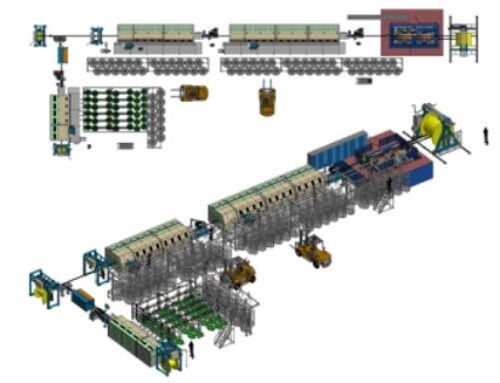
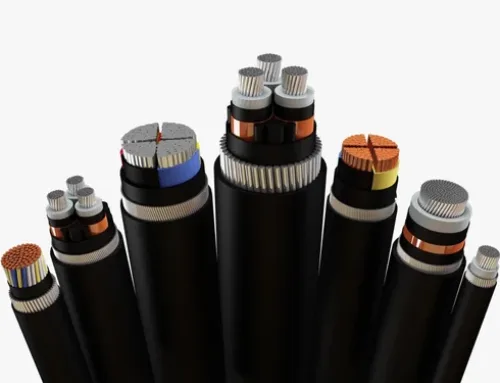
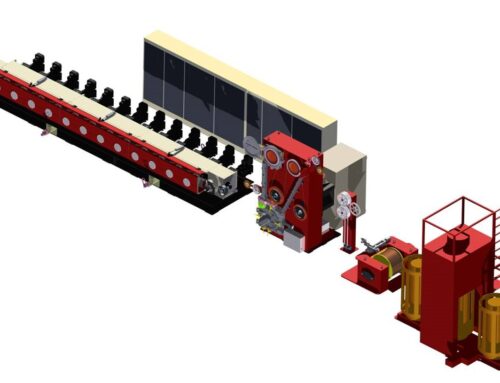
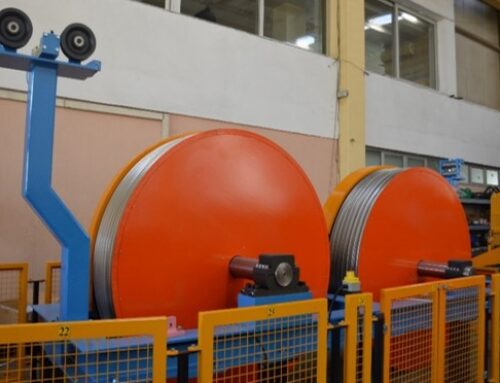
Leave A Comment